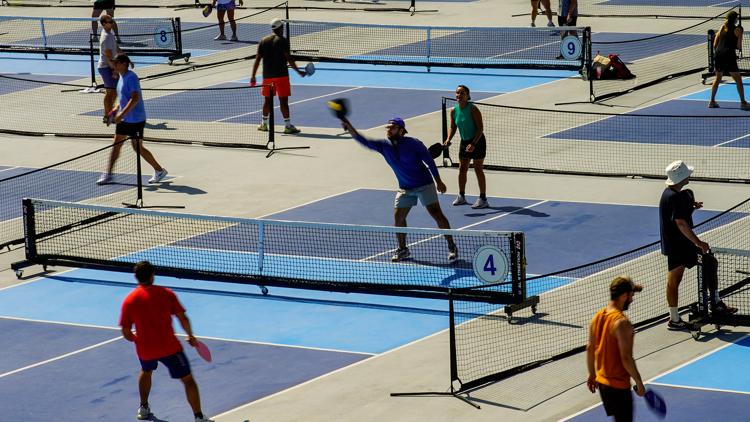
U.S. Tennis Association Introduces “Red Ball Tennis” as Response to Pickleball Boom
In an effort to combat the rising popularity of pickleball, the U.S. Tennis Association is launching “red ball tennis”, a shorter-court version of traditional tennis.
With pickleball’s explosive growth of 223% over the past three years, tennis officials are concerned about the encroachment on tennis courts and the potential for pickleball to surpass tennis in player numbers.
U.S. Tennis Association President Dr. Brian Hainline expressed his frustration, stating, “It’s obnoxious to hear that pickleball noise,” highlighting the distinct sound of pickleball points.
While some countries have embraced pickleball as a gateway to tennis, the USTA is taking a different approach by promoting “red ball tennis”. This version of tennis, played on smaller courts with a low-compression red ball, aims to attract players of all ages and skill levels.
By introducing over 400 pilot programs across the country, the USTA hopes to make tennis more accessible and appealing, starting on pickleball courts. The concept is to provide a smoother transition from red ball tennis to full-court tennis.
Despite the competition between pickleball and tennis, some believe there is room for both sports to thrive. Pickleball USA CEO Mike Nealy acknowledges the growth of pickleball but remains focused on supporting the game and its community.
As both sports continue to evolve, the USTA aims to grow tennis participation to 35 million players by 2035. By offering demonstrations of red ball tennis at events like the U.S. Open, the USTA hopes to attract new players and showcase the uniqueness of tennis compared to pickleball.
In the end, the goal is to provide options for players to choose the sport that best suits their preferences and skills. The debate between pickleball and tennis may continue, but ultimately, the variety of options can only benefit the sports community as a whole.
Top-ranked American tennis player Taylor Fritz sums it up best, “I don’t see any reason why both of them can’t exist.”
Source: AP Tennis Writer Howard Fendrich




